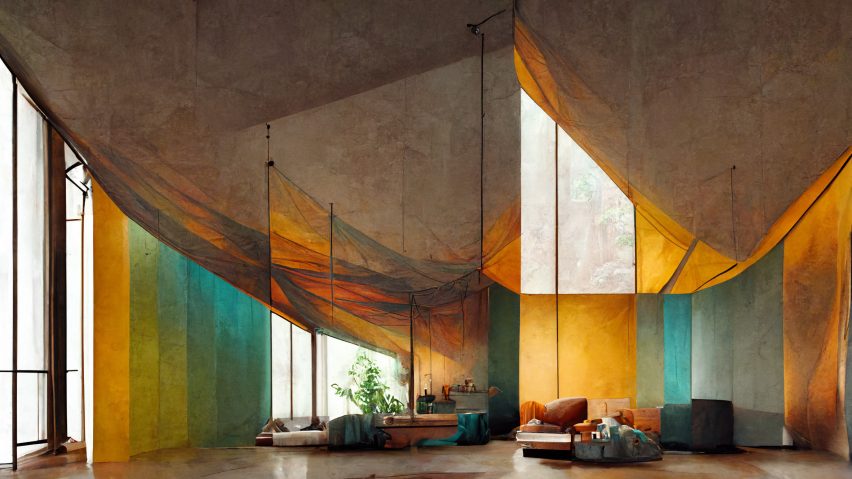Share This Article
Technological hurricanes bring forth leaps in industries. CAD did this to architecture a few decades ago, and now AI is here to do the same. Only this time, more disruptive.
Over the past year, we have seen how AI has infiltrated various aspects of our lives – from helping us write emails for work to self-driving cars. The architecture and design industry has had mixed reactions to this development. While some embrace this new wave, a large crowd remains sceptical of these advancements, mainly due to the fear of being replaced by this disruptive guest. Is AI in architecture the blessing of our generation or a force to replace us?

There was a collective concern over people losing their jobs when computers became standardised. Since we had Excel, was there a need for accountants anymore? Today everyone realises how stupid this sounds: we are all familiar with the software, but not all can manage accounts for an organisation with Excel. Pretend it is 2060. Your kids are listening to you narrate how every architect feared being replaced by AI. Would they not find it silly? This new wave of advancements has the same cultural fears of replacement as the previous wave.
AI is supposed to bridge the time gap between idea and execution rather than the skill gap between an amateur and a professional. Generative AI tools like Midjourney and Stable Diffusion help you produce iterations faster than you would have had using previous software. They are priceless when testing visual options like different facades, forms, compositions and elements. In the midst of this, there is an opportunity for architects to connect the dots and find design breakthroughs that would have taken them significantly longer to reach.

Most image generation prompts work on a simple structure. Effective Midjourney architecture prompts consist of the following elements:
- Subject
- Environment
- Lighting
- Colour
- Mood
- Composition
- Style+Aesthetic
Specifying all these aspects of the image you want to generate gives the model a good reference and helps you create images you can tweak with better control. An image-to-image platform like Stable Diffusion can help you input a base image on which you can apply these changes. This helps you try out a plethora of design options quickly. What would have required a couple of interns to sit for an hour can be executed now in a couple of minutes. For instance, you have built a block model for a residence in a tropical environment and want to test out different facade options. Instead of individually modelling each option, simple collages in Photoshop will do. Stable Diffusion can make sense of these collages to give you ten choices by the time you come up with one. The architects are now free to pursue one of these options in detail.
AI did not help the architects create something they could not have made. It simply saved them the trouble of sitting with menial tasks. AI lets architects spend their quality time designing the building. In the same way that an architect assigns interns tasks like trying out different visual options, generative AI tools can take it up and give us back our time.
This is the extent to which AI can help us. BIM AI tools could play a similar role in taking up tasks which do not require our creative attention. Only the time gap will be bridged – not the skill gap.

Is this bad news for architects? Not at all. An architect who knows how to design and can make reasonable decisions has nothing to fear because AI will not replace that. The decisions made by architects are a result of the project?s typology and context. Each project has its own set of studies and references for the architects to craft something sensible. An AI model that looks at images and spews out something similar is not in the position to replicate the decision-making process that makes good architecture what it is.
If you?re someone who can only bring software knowledge to the table, AI will replace you. It?s exponentially cheaper and gets the job done way faster. Unless you can bring research and decision-making skills, you will get replaced. If you find yourself on the other side, use these tools to your advantage. Those who incorporate AI into their workflow will outperform those who don?t by miles.
People will take time to acclimatise to these developments: just like the last wave. A couple of decades from now, it will be standard practice, and the winners will be those who managed to get a grip at this early stage.
